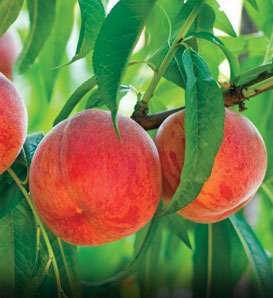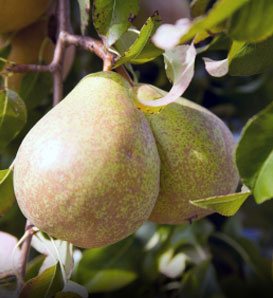We're about two weeks into the NEW YEAR, and I'm sure there are plenty of people committing to their New Year's Resolutions. I have written about exercise programs (P90X, INSANITY, Julian Michaels, and Zumba) in the past, as well as weight loss products; but I wanted to write about this topic once again because it is the perfect time of year to do so...
P90X, INSANITY, JULIAN MICHAELS, ZUMBA, and other exercise programs have three aspects in common: (1) they're pointless, (2) they are marketing off of your unhappiness/vulnerability; and (3) they're stressing your body quickly in a shorter amount of time in order for you to achieve faster results. These "quick" miracles, with the promise you will be gorgeous in 90 days, defeats the body faster -- then you inherently give up exercising because your body aches, and as you become lazier you find solace in unhealthy foods.
P90X, INSANITY, JULIAN MICHAELS, ZUMBA, and other exercise programs have three aspects in common: (1) they're pointless, (2) they are marketing off of your unhappiness/vulnerability; and (3) they're stressing your body quickly in a shorter amount of time in order for you to achieve faster results. These "quick" miracles, with the promise you will be gorgeous in 90 days, defeats the body faster -- then you inherently give up exercising because your body aches, and as you become lazier you find solace in unhealthy foods.
Real exercise is minimal and long, like biking, hiking, running, dancing and yoga. Kenpo is also very fun, and one of my favorite exercises (I show off some of my Kenpo moves in this post "Exercises for Vegans".)
Now, I'm not undermining these work-out programs, because they have definitely helped many people, but for the majority of consumers who have bought into these products, may feel resentment towards the same programs. But lets at least exercise programs some credit; because weight loss food and supplement products are WAY worse. I'm talking about SENSA, Hydroxycut, Atkins Diet, Weight Watchers, alli, QuikTrim that tell you to ingest unhealthy drugs to lose weight.
All of the weight control programs/products I have mentioned, are deliberately promoting an anorexic diet. Sensa encourages people to suppress their hunger, by sprinkling a concoction onto your food, so you will eat smaller portions.
Don't you feel like a science experiment when dousing Sensa on your food, or taking pills to get rid of fat??
Weight
Watchers is similar in that it uses a number system so you can control
the amount of food you are eating. The Atkins diet aims for you to eat
all of the low carb foods like meat, without fruit, rice,
and potatoes.
Every
weight loss product and program is going to tell you to eat smaller
portions, because they know you're going to keep eating animal products, which have the highest fat and lowest nutritional value. Fruits and vegetables, on the other hand, have zero fat and have the highest source of vitamins.
Furthermore,
you don't need to pay someone to tell you how you should eat. You
already know how you should eat. You know you should be eating 2500-3000
calories from grains (gluten-free pasta, rice), fruit, vegetables, and greens; while limiting or eliminating animal products (milk, eggs,
dark & white meat, and processed foods.)
If
you eliminate animal foods, and FILL yourself up on fruits and
vegetables, you'll be losing weight so fast you will rarely need to
exercise. Not to mention, animal products and pre-packaged foods are more expensive than fruits and vegetables. I have a post here "Veganism is the CHEAPEST DIET??" that talks about Veganism being inexpensive compared to eating a animal-based diet.
Weight Watchers, Atkins diet, and other weight loss programs have the money to advertise their product DAILY. These products are marketing off of your unhappiness and vulnerability.
It's easier to brainwash people into thinking they need that product
when they see the commercial everyday, while they sit bloated and lazy
on their couch.
I
cannot stress this point enough: stop relying on products and "gurus"
that are selling products, because these are the type of people that are
JUST trying to make a living (they are not selling health information.)
It's not just meat eaters that are fooled into buying products. Vegans often buy superfoods and supplements that are being marketed by "health gurus", when they are totally being fooled into buying them. As long as you stuff yourself with fruits, vegetables, and greens -- you don't need powdered superfoods or supplements. I have post on this subject here "Don't Be Fooled By the Supplements & Superfoods!". NO MORE POWDERED PROTEIN, PEOPLE!!! You don't see a VEGAN elephant or cow buying protein powders, and look how gigantic they are!
It's not just meat eaters that are fooled into buying products. Vegans often buy superfoods and supplements that are being marketed by "health gurus", when they are totally being fooled into buying them. As long as you stuff yourself with fruits, vegetables, and greens -- you don't need powdered superfoods or supplements. I have post on this subject here "Don't Be Fooled By the Supplements & Superfoods!". NO MORE POWDERED PROTEIN, PEOPLE!!! You don't see a VEGAN elephant or cow buying protein powders, and look how gigantic they are!
My advice to you is: eat fruit and vegetables till you are stuffed; and exercise for one hour, three times a week:
1. Low fat vegan (high CARB) diet:
eat lots of potatoes, bananas, juicy fruit, greens, rice, and
soy milk/cereal. Limit salt and oil, especially fat. Add avocadoes and
nuts in your diet in the winter, but be careful on your fat intake as avocados and nuts can "weigh" you down. Fruits and vegetables supply you
with more vitamins and zero fat. Plus, fruits and vegetables are
inexpensive.
Meat is murder; milk is torture; and cheese is an addiction.
Meat is murder; milk is torture; and cheese is an addiction.
2. Light Exercise:
Yoga is great because it feels less like a chore, and more relaxing. Look on the internet (youtube) for yoga positions for beginners. Check out my Yoga Tips and where you can go to find good Youtube Yoga vids, in this blog post "TOP 5 YOGA TIPS FOR BEGINNERS"
hiking or biking, and even dancing are more practical and natural ways of
working the body. These exercises are minimal and long, which train the body for survival
situations. I have post that talks about the exercises that work best for me here "Exercises for Vegans (keeping it minimal"
The key is to put less stress on your body after so many years of doing so!!!
Another useful tool I like to use to make sure I'm getting adequate nutrition and keeping my fat intake low, is CRONOMETER.COM
Go to Cronometer.com to log your training and what you're eating!
Veganism does NOT promote an Anorexic diet. Please check out my post "The Feminist's Diet & the Media still promotes unhealthy eating standards"
"Obesity: Is Smaller Portions REALLY the answer? (No!)"
"Losing weight fast vs keeping the weight off"
And for VEGAN recipes, please check out my recipes on the left hand side of the blog.
The key is to put less stress on your body after so many years of doing so!!!
Another useful tool I like to use to make sure I'm getting adequate nutrition and keeping my fat intake low, is CRONOMETER.COM
Go to Cronometer.com to log your training and what you're eating!
Veganism does NOT promote an Anorexic diet. Please check out my post "The Feminist's Diet & the Media still promotes unhealthy eating standards"
"Obesity: Is Smaller Portions REALLY the answer? (No!)"
"Losing weight fast vs keeping the weight off"
And for VEGAN recipes, please check out my recipes on the left hand side of the blog.







